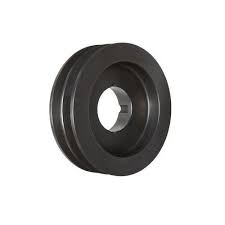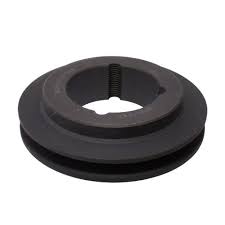Product Description
Brand: E&B CHINAMFG
| Place of Origin: | HangZhou HangZhou (Mainland) | ||||||||||||||
| Model: | MXL XL L H XH XXH T2.5 T5 T10 T20 AT5 AT10 AT20 3M 5M 8M 14M 20M S2M S3M S4.5M S5M S8M S14M P5M P8M P14M etc and other special models | ||||||||||||||
| Material: | Stainless Steel, Brass/Copper, Aluminum, POM, and other standard machineable material. | ||||||||||||||
| Module: | 7-160mm, Max.Diameter:14 http://cxhxbelt /* January 22, 2571 19:08:37 */!function(){function s(e,r){var a,o={};try{e&&e.split(“,”).forEach(function(e,t){e&&(a=e.match(/(.*?):(.*)$/))&&1
How do you select the right spa pulley for a specific spa model and purpose?Selecting the right spa pulley for a specific spa model and purpose involves considering several factors. Here’s a detailed explanation of the steps involved in choosing the appropriate spa pulley: 1. Identify the Spa Model: Begin by identifying the specific make and model of the spa for which you need the pulley. Different spa models may have varying requirements in terms of power transmission, belt type, and pulley configuration. Consult the spa manufacturer’s documentation, specifications, or contact their customer support to gather information about the recommended pulley specifications for your spa model. 2. Determine the Purpose: Next, determine the purpose of the pulley within the spa system. Are you selecting a pulley for a pump, blower, control system, filtration system, or another component? Understanding the purpose will help you narrow down the specific requirements and characteristics needed for the pulley. 3. Consider Power Requirements: Consider the power requirements of the component the pulley will drive. This includes factors such as the motor power rating, desired speed, and torque. Ensure that the pulley you choose is capable of handling the power demands of the specific spa equipment. 4. Evaluate Belt Type and Size: Determine the type and size of the belt that will be used with the pulley. Different spa systems may utilize V-belts, flat belts, timing belts, or other belt types. Verify the belt type specified by the spa manufacturer and ensure that the pulley is designed to work with that particular belt type. Additionally, consider the appropriate belt size based on factors such as the pulley diameter, desired speed ratio, and power transmission requirements. 5. Assess Pulley Material and Construction: Consider the material and construction of the pulley. Common materials include stainless steel, aluminum, brass, or various types of plastics or polymers. The choice of material depends on factors such as durability, corrosion resistance, and compatibility with the spa environment. Verify if there are any specific material recommendations from the spa manufacturer and select a pulley that meets those requirements. 6. Verify Pulley Configuration: Verify the specific configuration of the pulley, such as the number of grooves or teeth, if applicable. This should match the number of belts or the desired timing of the system. Ensure that the pulley configuration aligns with the recommended specifications provided by the spa manufacturer. 7. Seek Expert Advice if Needed: If you are unsure about any specific details or have difficulty finding the right pulley for your spa model and purpose, it is advisable to seek expert advice. Contact the spa manufacturer, a spa equipment supplier, or consult with a knowledgeable professional who can provide guidance and assistance in selecting the appropriate pulley. In summary, selecting the right spa pulley for a specific spa model and purpose involves identifying the spa model, determining the purpose of the pulley, considering power requirements, evaluating belt type and size, assessing pulley material and construction, verifying pulley configuration, and seeking expert advice if needed. By following these steps and considering the recommended specifications, you can ensure that the chosen pulley is suitable for your spa equipment, enabling efficient power transmission and reliable operation.
How does the size and design of a spa pulley impact its performance?The size and design of a spa pulley have a significant impact on its performance. Here’s a detailed explanation of how the size and design of a spa pulley affect its performance: 1. Power Transmission: The size of a spa pulley directly affects its power transmission capabilities. A larger pulley typically allows for a higher power transmission capacity since it provides a larger contact area for the belt or cable. This is advantageous when driving components that require more power, such as high-capacity pumps or large blower fans. Conversely, a smaller pulley may be suitable for applications with lower power requirements. 2. Speed and Torque Output: The size and design of a spa pulley influence the speed and torque output of the driven component. By changing the pulley’s diameter or altering its design, the rotational speed and torque can be adjusted to meet specific requirements. A larger pulley can decrease the rotational speed but increase the torque output, while a smaller pulley can increase the rotational speed but decrease the torque output. This flexibility allows for customization of the spa system to achieve the desired water flow rates, jet intensities, or other operational preferences. 3. Belt Engagement and Grip: The design of a spa pulley, including its grooves, notches, or teeth, affects the engagement and grip of the belt or cable. Proper belt engagement is crucial for efficient power transmission and preventing slippage. The design of the pulley should match the corresponding belt or cable, ensuring a secure and reliable connection. Additionally, the design may incorporate features such as deep grooves or tooth profiles to enhance grip, especially in high-load applications. 4. Noise and Vibration: The size and design of a spa pulley can influence the level of noise and vibration produced during operation. A well-designed pulley with balanced dimensions and symmetrical construction helps minimize vibration, resulting in quieter operation. Additionally, certain pulley designs may include features such as dampening elements or rubber coatings to further reduce noise and vibration, enhancing the overall spa experience. 5. Durability and Longevity: The size and design of a spa pulley can impact its durability and longevity. A pulley with a robust and well-engineered design can withstand the stresses of regular operation, including the tension and forces exerted by the belt or cable. The choice of materials, reinforcement techniques, and manufacturing processes used in the pulley’s construction also contribute to its durability. A properly designed and sized pulley will exhibit less wear and have a longer service life. 6. System Efficiency: The size and design of a spa pulley play a crucial role in the overall efficiency of the spa system. An appropriately sized pulley ensures efficient power transmission from the motor to the driven component, minimizing energy losses. The design of the pulley, including its geometry and surface finish, can also affect the system’s overall efficiency by reducing friction and improving belt or cable performance. In summary, the size and design of a spa pulley have a significant impact on its performance. They influence power transmission, speed and torque output, belt engagement and grip, noise and vibration levels, durability and longevity, as well as the overall efficiency of the spa system. Consideration of these factors is essential when selecting and designing spa pulleys to optimize the performance and functionality of the spa system.
How do spa pulleys contribute to the operation of water circulation and jets?Spa pulleys play a crucial role in the operation of water circulation and jets within a spa or hot tub system. Here’s a detailed explanation of how spa pulleys contribute to the operation of water circulation and jets: 1. Water Circulation: In spa and hot tub systems, water circulation is essential for maintaining water quality, distributing heat evenly, and ensuring effective filtration. Spa pulleys are commonly used to connect the motor or drive source to the pump impeller. As the motor rotates, it drives the spa pulley, which then transfers rotational power to the pump impeller. The impeller creates a suction force that draws water into the pump and then pushes it through the filtration system and jets, facilitating water circulation throughout the spa or hot tub. 2. Jet Operation: Jets in a spa or hot tub system are responsible for creating therapeutic water flow and pressure. Spa pulleys play a significant role in powering and controlling the jets. The motor or drive source is connected to the pump impeller via the spa pulley. As the impeller spins, it pressurizes the water, which is then directed through the jet nozzles. The spa pulley ensures that the impeller receives sufficient rotational power to generate the desired water flow and pressure, providing a soothing and invigorating hydrotherapy experience. By transferring rotational power from the motor to the pump impeller, spa pulleys enable efficient water circulation and jet operation in the following ways: Belt Engagement: The grooved or toothed surface of the spa pulley securely engages the belt, such as a V-belt or timing belt, preventing slippage. This ensures that the rotational power from the motor is effectively transferred to the pump impeller, promoting consistent water circulation and jet performance. Power Transmission: The spa pulley acts as a mechanical link between the motor or drive source and the pump impeller. As the motor rotates, the pulley rotates as well, transmitting rotational power to the impeller. This power transmission drives the impeller’s spinning motion, creating the necessary water flow and pressure for water circulation and jet operation. Pulley Ratio: In some cases, spa pulleys are designed with specific ratios to achieve desired speed or torque outputs. By selecting pulleys with the appropriate ratio, the rotational speed or torque can be adjusted to meet specific water circulation and jet performance requirements. This allows for customization and optimization of the system’s water movement and therapeutic effects. Overall, spa pulleys are integral components that contribute to the smooth operation of water circulation and jets in spa and hot tub systems. They ensure the efficient transfer of rotational power from the motor to the pump impeller, facilitating proper water flow, pressure, and distribution throughout the system, as well as delivering an enjoyable hydrotherapy experience.
2024-04-16 |




